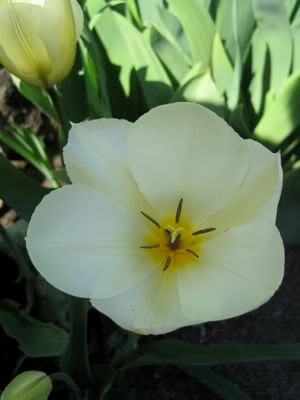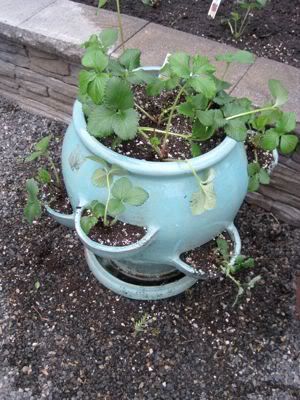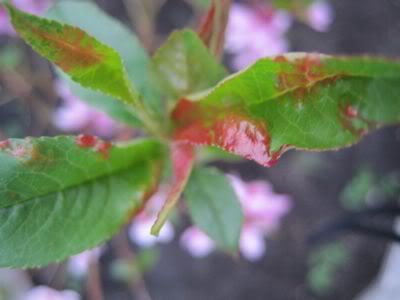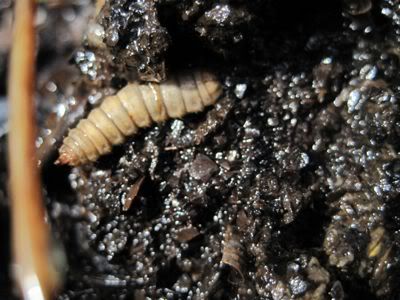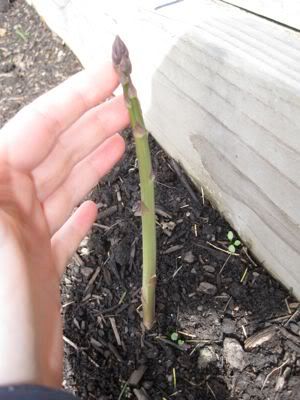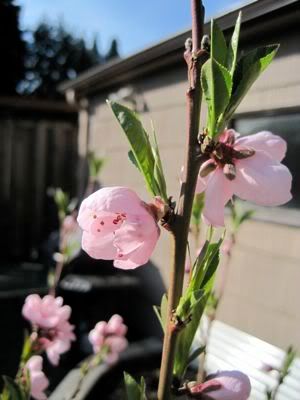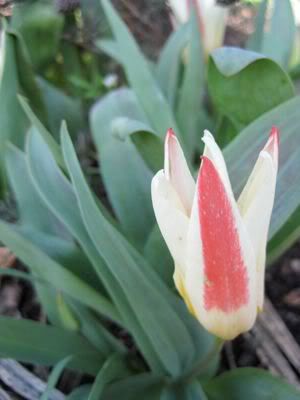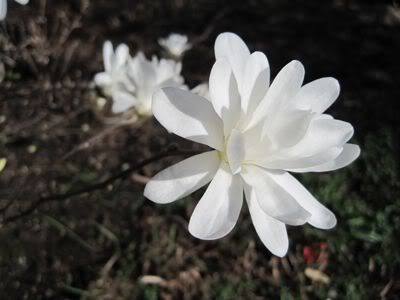I love going there. DH on the other hand, perhaps not so much but he humored me today and we had a bit of a family outing. We picked up some leeks and grass finished beef and arugula to make BBQ Burgers with for dinner. We split and grilled the leeks with the patties. It was the best freakin' burger I've had all year. OH I adore spring. I'm only sad I didn't get some of the gorgeous looking potatoes to make leek and potato soup. Ah well... next week perhaps.
After we got back DH made lunch for himself and the kiddlet then took her to the park and the grocery store. I worked in the garden... kinda. Actually I worked on our lawn. Well, it needs some TLC too ya know! Plus it was sunny and in the mid-high 60's. Just perfect for being outside!
So last month I put down corn gluten which inhibits weed seeds from germinating. Today I pulled out all the dandelions I could find. Whew~ There was a whole mess of them!* Since they hadn't gone to seed yet I chucked them in the compost (also good because they pull up a lot of calcium from deep down so that'll go back into the garden soil at some point). Anywhoodle. Then I mowed and sifted compost all across the lawn. (Feed the soil not the plants!) I also put down patches of compost where there was no grass growing either due to having pulled a dandelion from there or moss or what have you. Then I busted out the bag of black gold - worm castings! Yup. Worm poop. Awesome possum stuff. Sprinkled that everywhere. Then got out the bag of grass seed and seeded the areas where I'd laid down compost earlier. I kinda looks like a patchy mess at the moment but it's supposed to rain all next week. Perfect! Once the grass seed sprouts look really lovely.
There's a local company around here called Chem-Lawn. They always leave a sign up on lawns they service. Anyway the lawns are always this amazing deep green poison field but they sure do look pretty. I really thought that the only way I'd ever have a lawn like that was if I sprayed it with chemicals every three weeks. But I was looking at our grass today and it was a deep stunning green. I'm just pleased as punch that it's so healthy AND non-toxic. Wonderful! Plus I don't think I have to do anything else now for the rest of the year except mow. Nice. =)
*BTW DH and I had a good laugh because one of the venders was selling dandelion greens for crazy amounts of $$ at the farmer's market this morning. We could make a killing! Ours are organic even. Bwahahaha!
And just so this post isn't so wordy.. a few pictures perhaps?
More tulips in bloom

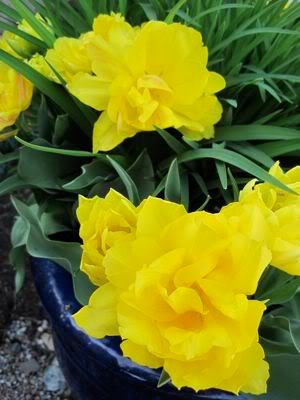
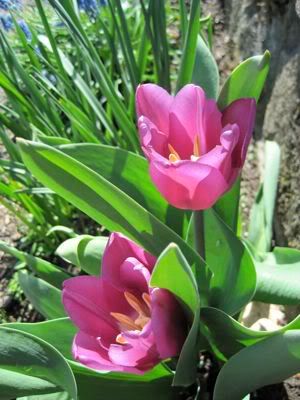
Baby broccoli is doing great

Peas have sprouted too though they're little...
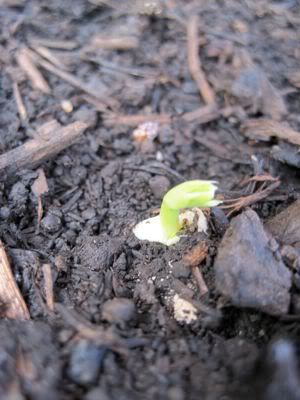
Kids eye view of newly planted onions, leeks and shallots and me at the compost pile chuckin' something in. Gotta keep the monster fed!

I also found another great use for my cold frames - prop up my garden notebook! Perfect for keeping track of everything. Please ignore the soda (though if you like Mango you really should try these - they're divine! - This from someone who rarely if ever, drinks pop)

BTW This is another kiddlet picture. I love letting her have the camera in the garden because she sees things I don't or wouldn't think to take a picture of. It's kinda neat.
